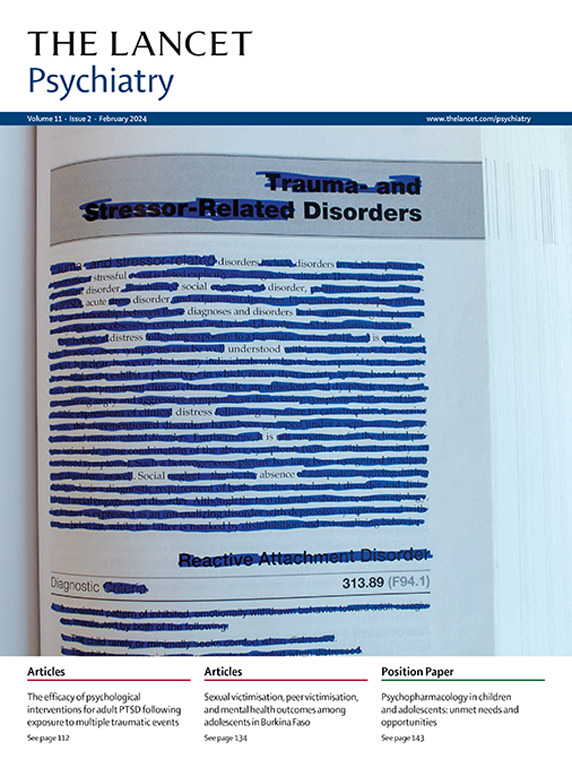Autism in schizophrenia and its original link to self-disorder: returning a borrowed concept
IF 30.8
1区 医学
Q1 PSYCHIATRY
引用次数: 0
Abstract
Autism was introduced by Eugen Bleuler in 1910 as a defining feature of schizophrenia, and it remained so for 80 years. However, the concept was borrowed by Leo Kanner and Hans Asperger to describe another condition (infantile autism) and eventually awareness of autistic features in schizophrenia declined. Today, autistic features are by default considered indicative of autism spectrum disorder, and patients with schizophrenia, who exhibit autistic features, risk being misdiagnosed with autism spectrum disorder and receiving inadequate treatment. To aid differential diagnosis and treatment, it is important to rediscover what autism in schizophrenia is, and how it differs from autism spectrum disorder. We present a reading of the seminal works that shaped the understanding of autism in schizophrenia and extract four key insights: autistic features are common in schizophrenia; autistic features are found both in behaviours and experiences; autism in schizophrenia can be defined as a frail immersion in the lifeworld, manifesting as a pervasive inability to take for granted what others consider matter of fact; and autism is hypothesised to be caused by self-disorder. Contemporary psychopathological research corroborates the idea that autism is caused by self-disorder, a concept that could substantially aid differential diagnostic resources.精神分裂症中的自闭症及其与自我障碍的原始联系:回归一个借来的概念
1910年,尤金·布鲁勒(eugene Bleuler)将自闭症作为精神分裂症的一个定义特征引入,并持续了80年。然而,Leo Kanner和Hans Asperger借用这个概念来描述另一种疾病(婴儿自闭症),最终人们对精神分裂症患者自闭症特征的认识有所下降。今天,自闭症特征被默认认为是自闭症谱系障碍的标志,而精神分裂症患者,如果表现出自闭症特征,就有被误诊为自闭症谱系障碍的风险,并且得不到适当的治疗。为了帮助鉴别诊断和治疗,重新发现精神分裂症中的自闭症是什么,以及它与自闭症谱系障碍的区别是很重要的。我们阅读了影响对精神分裂症中自闭症的理解的开创性作品,并提取了四个关键见解:自闭症特征在精神分裂症中很常见;自闭特征存在于行为和经历中;精神分裂症中的自闭症可以被定义为对生活世界的脆弱沉浸,表现为普遍无法将别人认为是理所当然的事情视为事实;自闭症被认为是由自我障碍引起的。当代精神病理学研究证实了自闭症是由自我障碍引起的这一观点,这一概念可以极大地帮助鉴别诊断资源。
本文章由计算机程序翻译,如有差异,请以英文原文为准。
求助全文
约1分钟内获得全文
求助全文
来源期刊

Lancet Psychiatry
PSYCHIATRY-
CiteScore
58.30
自引率
0.90%
发文量
0
期刊介绍:
The Lancet Psychiatry is a globally renowned and trusted resource for groundbreaking research in the field of psychiatry. We specialize in publishing original studies that contribute to transforming and shedding light on important aspects of psychiatric practice. Our comprehensive coverage extends to diverse topics including psychopharmacology, psychotherapy, and psychosocial approaches that address psychiatric disorders throughout the lifespan. We aim to channel innovative treatments and examine the biological research that forms the foundation of such advancements. Our journal also explores novel service delivery methods and promotes fresh perspectives on mental illness, emphasizing the significant contributions of social psychiatry.
 求助内容:
求助内容: 应助结果提醒方式:
应助结果提醒方式:


